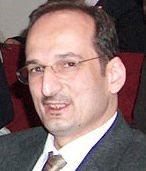

Mr Sener, starting the colloquy, let me request your view on current state of global textile dyes and chemicals industry.
The years 2008 and 2009 have been marked by the emergence of an unprecedented recession. Decreasing rates of economic activity have coincided with a large contraction in employment.
The crisis has brought about an unprecedented contraction in economic activity in both magnitude and scope. The bursting of a large real estate and stock market bubble in the US and some European countries has marked a dramatic downturn, further exacerbated and spread by the subsequent financial crisis and the contraction in international trade of textile and chemical industry.
Now, we investigate the impact of the crisis on competitiveness, looking at short-term developments but also taking a broader longer-term perspective. While these developments are expected to have a negative impact on competitiveness in the short-term, there are also reasons to expect a rapid recovery in productivity. Not least because the crisis provides momentum for structural reforms that can boost future competitiveness.
Studying figures provided by EU Industrial Structure 2009, we can see for 1995-2007, Labor productivity growth rate was 1.5%, where as Value added growth rate & Employment Growth rate stood -1.2% and - 2.7% respectively.
So in this backdrop, what trends are likely to pop up, and what niche Setas Group aims?
Setas group with knowledge, innovative behavior and freshness will plan growth in future. Setas’ trends go towards tailor-made product solutions that enable our customers to be silhouetted against their competitors. From our technological point of view, the use of nanotechnology will certainly become more important.
Well then, may we request you to also elaborate about nanotechnology in your sector, a little further.
Nanotechnology is predicted as the second industrial evolution in the world. The created novel properties not only improve the quality of human’s life, small amount material consumption will help saving energy and environment. Traditional textiles industry is not exception and nano textile products have already emerged in the market and the number of nano-claimed products or by-products is increasing dramatically. In order to estimate the reasonability of rapid development, the maturity of nanotechnology in textiles field is evaluated.
For your sector, in regards to opportunities for trade and investments, which countries are being counted on?
The term BRIC, is the common label for the four largest fast growing emerging countries: Brazil, Russia, India and China. Their common features include a large territory and population, low income levels, but also fast economic growth resulting in the emergence of a prosperous local middle class.
Opportunities for trade and investment in the large and rapidly expanding BRIC Dyes & Chemicals markets are obvious, and companies from the EU are already well positioned there. Major challenges include cost competition in product markets, changing patterns in global commodity flows (energy, metals and food), non-tariff barriers to trade, regulatory deficiencies, e.g. concerning intellectual property rights, and various institutional impediments to foreign investment.
And, as we step into 2010, do you envisage any peculiar behavior of global market therein?
In textile and dye industry the innovative behavior of the firm will be key factor for the competiveness 2010. But; two opposing forces determine the innovative behavior of firms. On the one hand, recession can be seen as a period of tough competition where innovation is the way to stay ahead of competitors. On the other hand, the short-run need to cut costs is more likely to affect activities with uncertain or no immediate returns. The second force seems to dominate when we observe R&D expenditures and, in general, innovative activities. Such activities indeed seems to be procyclical with the reduction of R&D expenditures being driven by the cost-cutting strategy usually followed by firms during recessions.
Also a number of mergers and acquisitions can be noticed last year, particularly in your industry. Do you think this trend would be carried forward for current year too?
Mergers and acquisitions were seen mainly in the USA, Japan and European dye industries over last few decades. India and China, Indonesia, Turkey has seen new players coming to the field until last year, the economic crisis and the prevailing uncertainty has stopped new players coming on in 2009 and some players disappeared due to financial difficulties in 2009. We think any M&A activities in future will be in the direction of new players in ‘new counties’, acquiring old European names.
Your comments on REACH would be?
Reach regulation can have both positive and negative effects on productivity For example, Reach can have a positive effect on eco-friendly productivity and economic welfare by supporting competitive markets and protecting intellectual property or by correcting for some restricted toxic forms of market failure.
Fibre2Fashion wishes best of the year and great business ahead, Mr Sener! Thanks a bunch for your comments and time.
Thanks!
#######DISCLAIMER: All views and opinions expressed in this column are solely of the interviewee, and they do not reflect in any way the opinion of Fibre2Fashion.com.